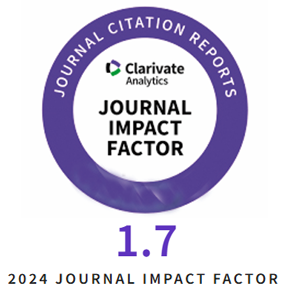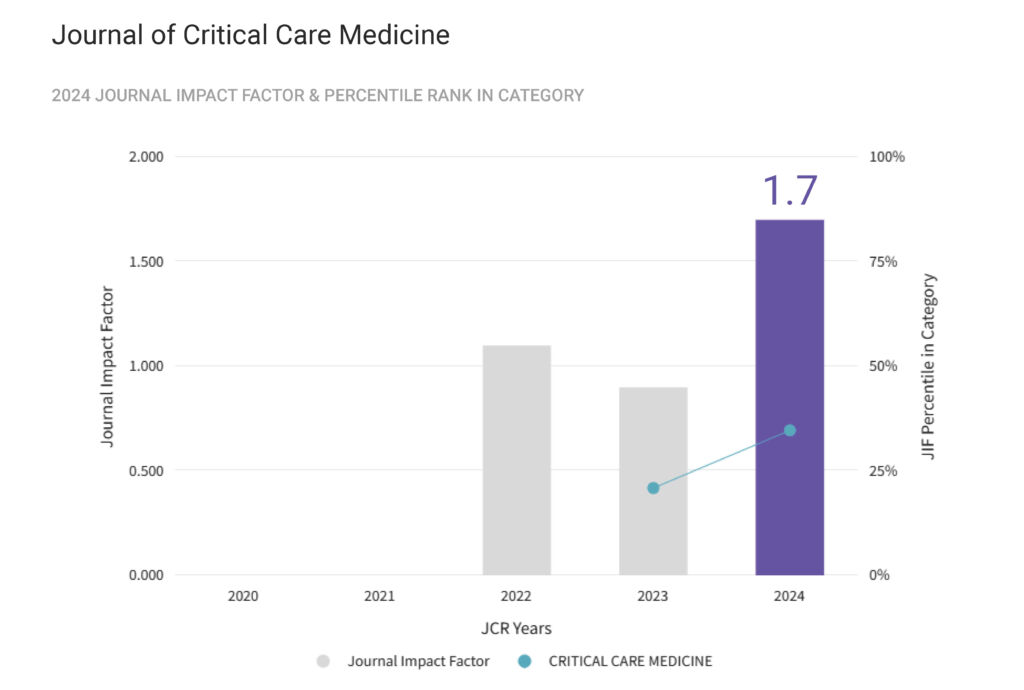Introduction: Lesions of the carotid and vertebral arteries secondary to direct trauma, called blunt cerebrovascular injuries (BCVI) are relatively rare and are markedly different from spontaneous dissections. Ischaemic stroke is a significant complication, with high morbidity and mortality rates. The basis of a diagnosis relies on appropriate, high sensitivity imaging screening.
Case report: We present the case of a 31 years old male patient with polytraumatism secondary to a motor vehicle accident, who was admitted to an orthopaedic clinic for multiple lower extremity fractures. His fractures were treated surgically. He developed in the 3rd day after the admission left sided hemiparesis secondary to ischaemic stroke. The diagnosis of traumatic carotid artery injury (TCAI) was based on duplex ultrasound and angio CT scans. The outcome was favourable despite the severe carotid lesions presenting with occlusion secondary to dissection.
Conclusions: In the majority of BCVI cases there is a variable latent period between the time of injury and the development of stroke. The management of cases is challenging because in the majority of cases there are multiple associated injuries. Although antithrombotics are widely used in the treatment, there is no consensus regarding the type of agent, the optimal dose or treatment duration.
Author Archives: administrare
Neurological Critical Care Services’ Influence Following Large Hemispheric Infarction and Their Impact on Resource Utilization
Introduction: Acute ischemic stroke (AIS) is the fourth leading cause of death in the US. Numerous studies have demonstrated the use of comprehensive stroke units and neurological intensive care units (NICU) in improving outcomes after stroke. We hypothesized that an expanded neurocritical care (NCC) service would decrease resource utilization in patients with LHI.
Methods: Retrospective data from consecutive admissions of large hemispheric infarction (LHI) patients requiring mechanical ventilation were acquired from the hospital medical records. Between 2011-2013, there were 187 consecutive patients admitted to the Jefferson Hospital for Neuroscience (Philadelphia, USA) with AIS and acute respiratory failure. Our intention was to determine the number of tracheostomies done over time. The primary outcome measure was the number of tracheostomies over time. Secondary outcomes were, ventilator-free days (Vfd), total hospital charges, intensive care unit length of stay (ICU-LOS), and total hospital length of stay (hospital-LOS), including ICU LOS. Hospital charges were log-transformed to meet assumptions of normality and homoscedasticity of residual variance terms. Generalized Linear Models were used and ORs and 95% CIs calculated. The significance level was set at α = 0.05.
Results: Of the 73 patients included in this analysis, 33% required a tracheostomy. There was a decrease in the number of tracheostomies undertaken since 2011. (OR 0.8; 95% CI 0.6-0.9: p=0.02). Lower Vfd were seen in tracheostomized patients (OR 0.11; 95%CI 0.1-0.26: p<0.0001). The log-hospital charges decreased over time but not significantly (OR 0.9; 95%CI 0.78-1.07: p=0.2) and (OR 0.99; 95%CI 0.85-1.16: p=0.8) from 2012 to 2013 respectively.
The ICU-LOS at 23 days vs 10 days (p=0.01) and hospital-LOS at 33 days vs 11 days (p=0.008) were higher in tracheostomized patients.
Conclusion: The data suggest that in LHI-patients requiring mechanical ventilation, a dedicated NCC service reduces the overall need for tracheostomy, increases Vfd, and decreases ICU and hospital-LOS.
Severe Austrian Syndrome in an Immunocompromised Adult Patient – A Case Report
Background: Known also as Osler’s triad, Austrian syndrome is a complex pathology which consists of pneumonia, meningitis and endocarditis, all caused by the haematogenous dissemination of Streptococcus pneumoniae. The multivalvular lesions are responsible for a severe and potential lethal outcome.
Case report: The case of a 51-year-old female patient, with a past medical history of splenectomy, is presented. She developed bronchopneumonia, acute meningitis and infective endocarditis as a result of Streptococcus pneumoniae infection and subsequently developed multiple organ dysfunction syndromes which led to a fatal outcome. Bacteriological tests did not reveal the etiological agent. The histopathological examination showed a severe multivalvular endocarditis, while a PCR based molecular analysis from formalin fixed valvular tissue identified Streptococcus pneumoniae as the etiologic agent.
Conclusions: The presented case shows a rare syndrome with a high risk of morbidity and mortality. Following the broad-spectrum treatment and intensive therapeutic support, the patient made unfavourable progress which raised differential diagnosis problems. In this case, the post-mortem diagnosis demonstrated multiple valvular lesions occurred as a result of endocarditis.
Volume 3, Issue 4, October 2017
Neutropenia and T-Wave Inversion as Toxin-Mediated Complications of a Streptococcal Infection
Introduction: Streptococcal infection can be responsible for multiple complications, such as toxic, septic or allergic disorders. Toxin-mediated complications (TMC) can appear during the acute phase of disease and can involve any organ, causing carditis, arthritis, nephritis, hepatitis etc.
Case presentation: The case of a young woman without a history of recurrent streptococcal tonsillitis, admitted to “Matei Balş” National Institute for Infectious Diseases, Bucharest, Romania, presenting with fever, sore throat and exudative tonsillitis, is detailed. The initial test for Streptococcus pyogenes was negative. The patient had leukopenia with severe neutropenia, high values of inflammatory biomarkers and electrocardiographic (ECG) changes with inverted T waves in leads V1-4 and flattened T waves in V5-6. There were no other cardiac signs or symptoms. The patient received cefuroxime for two days. On admission, the patient was prescribed Penicillin G and dexamethasone which resulted in a rapid recovery. The leucocytes count returned to normal as did the ECG abnormalities. At the time of discharge, the antistreptolysin O titre was high.
Conclusions: The case highlights the toxin-mediated complications (TMC) of streptococcal infection which occur from the outset of the disease.
Let’s Talk About Sepsis
The current definition of sepsis is based on comparatively contemporary knowledge. However, the disease process is not fully understood and treatment still profoundly challenging. Definitions and guidelines have changed over the recent years, and clinicians are always interested to know what the new and current thoughts on the subject are.
Many papers have been published in the medical press, reporting on definitions, scores, models, cytokines, therapies, new trends, statistics, campaigns, including a sepsis anniversary day-which is not celebrating but fighting against sepsis. Together they signify the enormous interest in the subject.
The American College of Chest Physicians and the Society of Critical Care Medicine met in 1992 and gave the first definition of sepsis and associated organ failure [1]. Eleven years later, American intensivists met European intensivists to evaluate if there was a need for a new definition of sepsis [2]. [More]
Lethal Subarachnoid and Intracerebral Haemorrhage Associated with Temporal Arteritis. A Case Report
Giant cell arteritis is a systemic inflammatory vasculitis, typically involving the superficial temporal arteries, but with possible ischemic and hemorrhagic cerebrovascular complications.
The case is reported of a patient with a clinical picture of giant cell arteritis, who had multiple occupational exposures to various infectious agents.
His initial favourable progress was followed by an atypical outcome. Despite immunosuppressive treatment, he developed fatal subarachnoid and intracerebral haemorrhages, possibly due to rupture of a microaneurysm of the posterior cerebral artery.
Clinical Features and Outcomes of Fusobacterium Species Infections in a Ten-Year Follow-up
Objective. Although uncommon, Fusobacterium infections have a wide clinical spectrum, ranging from local pharyngeal infections to septic shock. Our aim was to characterize and analyze the clinical features and outcomes in patients with Fusobacterium infections, and determine which variables were able to predict a poor outcome.
Methods. We conducted a retrospective, hospital-based study using the computerized records of a second-level Spanish general hospital, serving a population of 155,000 inhabitants. The cohort was enrolled among patients cared for at the hospital between 2007 and 2016. Demographic, clinical data, microbiological characterization and outcomes at discharge, were analyzed.
Results. We collected data for all 26 patients over a 10-year period (annual incidence of 1.78 per 100,000), with an incidence of bacteremia of 0.53 cases per 100,000 population per year. F. nucleatum and F. necrophorum were the most frequent isolations (53.8% and 38.5%, respectively). F. necrophorum was found to be associated with a younger population. Although we found no deaths attributable to Fusobacterium, 15 patients (57%) were found to have severe infections due to this pathogen, and 7 patients (26.9%) were admitted to the Intensive Care Unit (ICU). The only identifiable risk factor for a severe infection (sepsis, septic shock or ICU admission) was the presence of bacteremia.
Conclusions. Fusobacterium infections are uncommon. F. necrophorum tends to cause infection in younger individuals, while F. nucleatum has a preference for older patients. The clinical spectrum is wide, ranging from local, non-severe infections, such as sinusitis or pharyngitis, to abscess formation and life-threatening infections.
Cytoreduction with Hyperthermic Intraperitoneal Chemotherapy and Renal Insufficiency Related to Diabetes Mellitus: An Anesthetic Challenge
Cytoreductive surgery (CRS) combined with hyperthermic intraperitoneal chemotherapy (HIPEC) improves the prognosis in selected patients with peritoneal surface malignancies but it is an extensive procedure predisposing to major complications. Among them, renal toxicity was reported. Severe renal insufficiency is considered a contraindication for this complex procedure. We present a patient with diabetic nephropathy with renal insufficiency KDOQI 3 and peritoneal metastasis from sigmoid adenocarcinoma with a good clinical outcome after CRS with HIPEC, highlighting the anesthetic precautions considered for this particular clinical case.
The Use of Continuous Ketamine for Analgesia and Sedation in Critically Ill Patients with Opioid Abuse: A Case Series
Managing pain and agitation in patients with opioid abuse is becoming more common in intensive care units. Tolerance to commonly used agents is often observed, leading to inadequate pain control and increased agitation. Ketamine’s unique mechanism of action and opioid-sparing effects make it an ideal agent for patients with suboptimal response to opioid therapy.
This report describes our experience using continuous ketamine infusions for analgesia and sedation in four mechanically ventilated patients with histories of opioid abuse that had suboptimal response to standard therapy. Ketamine was successful in improving analgesia and sedation in three patients while reducing the need for other analgesics and sedatives with minimal adverse effects.
Continuous ketamine infusions may be useful to facilitate mechanical ventilation in patients with histories of opioid abuse with minimal toxicity. More information is needed on the optimal dose and titration parameters.










